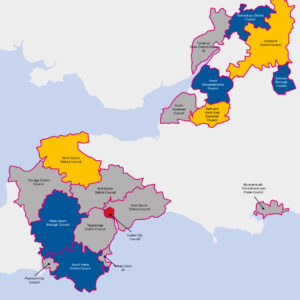Public relations is often seen by many as media relations. But media is just but one stakeholder that PRs and their organisations need to consider when developing a highly effective communications programme. That’s why stakeholder engagement across the board plays a critical role in enabling organisations to grow, maintain and safeguard their reputations.
As one commentator said: “Stakeholder engagement is like a friendship, we know that our friends tell the truth, they will listen to what we say, they stick with us when going through difficult times, and celebrate when things go well. We trust them and that comes across when we talk about them with others.”

Two major factors have put the spotlight on the need for strong stakeholder engagement. Firstly, there is a growing recognition amongst organisations that genuine social and environmental responsibility is critical to business success – as seen through the rise of ESG on the board agenda. Secondly, we have witnessed the unabated growth in social media take up with users holding organisations increasingly to account in an open environment.
Done well, engagement with internal and external audiences can have a hugely positive impact on organisational success. Proactive engagement with your stakeholders – for example, with the likes of employees, investors, customers, communities, governments, NGOs, the media, business partners and suppliers – can according to research increase market valuation by 40-80% compared to companies with average or weak relationships. It can also support more informed decision making, enhance morale and contributions from within your organization, open up new business opportunities, reinforce your organisation’s inclusive image and mitigate potential risks such as uncertainty, dissatisfaction, misalignment, disengagement and resistance to change.
So, what is the art of effective stakeholder engagement? Here are 5 tips:
- Map out all your stakeholders that can have a bearing on your organisation. There is no such thing as a one-size-fits-all stakeholder landscape. Every organisation’s map will be different as it should be tied inextricably to its bespoke strategy.
- Understand the importance of each stakeholder to your organisation now and in the future – ask yourself how will such engagement support our growth in market share in the sectors in which we operate, how will it support what we stand for as an organisation, how can it lead to talent retention and acquisition? These are the types of strategically led questions you need to ask when determining your priority stakeholders for the highest level of communications and engagement. Focus on those that have the most interest in your organisation and can have the most influence.
- Once you’ve determined which stakeholders you want to focus on, collaborate with them on business initiatives that will build strong and sustainable relationships with them and other audiences and create appropriate communications and engagement activities around these initiatives. Also, ask for their views on issues and opportunities that your organisation wants to address or capitalize on respectively. Give them the VIP treatment by giving them a major say in how you go about your business.
- In particular, identify and leverage your ‘messenger’ audiences, those that will talk your organisation up and amplify your communications and engagement activities, as well as ‘top tier influencers’ who will open doors and support the removal of barriers to your organisation’s strategy and ambitions.
- Put measures in place, in the form of positive indicators, to evaluate the impact of your stakeholder engagement. It’s important to learn from what’s gone well and not so well and review and adapt accordingly. For example, positive indicators could include a review of the impacts on the organization from the influence of certain stakeholders or the degree to which stakeholders have acted as advocates for the business and the outcomes of such support.
If your PR department or Board hasn’t already given due consideration to all the potential stakeholders that can bring value to your organisation, it’s time to make ‘friends’ with them.

Chris Lawrance Managing Director


